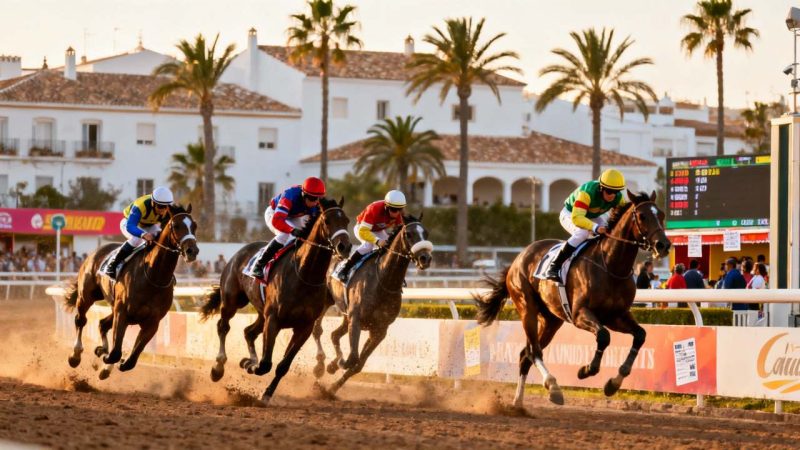
The first real horse races in Spain took place 182 years ago, in 1835, in the town of Alameda de Osuna, located northeast of Madrid. Now, Barajas Airport stands on that historic site.
The initiator and inspirer of this new venture was the Duke of Osuna, a great connoisseur and admirer of horses, whose family owned extensive lands in the Alameda area. Together with other aristocrats, friends, and like-minded people, he decided to introduce this sport, which was actively developing in England and France at the time, to Spain.
In recent years, interest in horse racing (also known as “turf”) has grown significantly in Spain, as these competitions are considered one of the most reliable for betting. However, it must be said that there are far fewer fans of betting on horse racing on the Iberian Peninsula than there are fans of football or basketball betting.
Two horse racing pools are particularly popular among players: Quíntuple Plus, based on predicting the results of five specific races, and Lototurf, a mix of lottery and betting pool, where the idea is to guess 6 numbers out of 31 and the name of 1 winning horse out of 12 proposed.
Find out all the information here – official Casino Click website
There are several racetracks in Spain where races are held regularly, and you can bet on them both online and in person.
The most modern of these is the La Zarzuela Racetrack (Hipódromo de La Zarzuela), which is also an architectural monument. Located on the outskirts of Madrid, it was built in 1941 to replace the historic La Castellana Racetrack, which had been demolished a few years earlier.
In 1996, the La Zarzuela racecourse was closed. Firstly, it was outdated, and secondly, it went bankrupt due to the lack of serious interest in equestrian sports among Spaniards. Only nine years later was the racecourse in Madrid renovated and reopened.
Since then, spring, summer (including night races), and autumn racing seasons have been held here, with a total of about 250 races per year. La Zarzuela has a capacity of 6,000 spectators. The grounds feature many fine restaurants and banquet halls, which often host various events. There is also an exclusive area for VIPs, as well as playrooms for children.
The second most important racetrack, the Gran Hipódromo de Andalucía, is located in southern Spain, in the small town of Dos Hermanas in the province of Seville. It can accommodate 5,000 people and covers 155 hectares, making it the largest in the Kingdom in terms of area.
There is another racetrack in Andalusia that is popular among horse racing enthusiasts called Hipódromo de la Costa del Sol. It is located in Mijas, one of the most prestigious resorts on the Mediterranean coast of Spain. The stadium can accommodate 1,500 spectators and is usually packed to capacity, especially during summer night races.
Every winter on February 28, this racetrack hosts one of Spain’s most significant horse racing events, the Mijas Cup Gran Premio de Andalucía, which features the best jockeys and horses from Europe and America.
Slightly lower in level are such equestrian stadiums in Spain as the De Son Pedro racecourse in Palma de Mallorca, the Mestas sports complex in Gijón, and the Lasarte racecourse in San Sebastián.
In addition to traditional horse racing at racetracks in Spain, there are also more original horse races on which you can also place bets.
